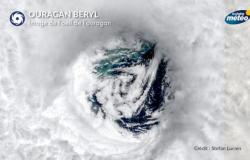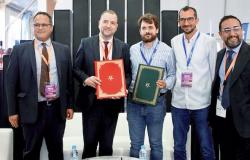
“The city council signed a contract with Hatfield, the humidity accelerator, yesterday,” reported the San Diego Union on a sunny day in December 1915. The humidity accelerator, you say? A sentence to say the least, but it must be said that the situation is serious in the big city of California. In the midst of a drought, when the city’s water reservoir threatens to dry up, San Diego decides to play it safe by hiring Charles Mallory Hatfield. This man, a sewing machine salesman converted into a “rainmaker”, promised to fill the tank until it overflowed by December 1916, for the tidy sum of $10,000. “All the councilors are in favor of the contract, except Fay (a council member), who says it’s pure madness.”
Why Big Insurers Are Fleeing California and Florida
Calling on a rainmaker to solve this severe drought seemed obvious to the authorities. It must be said that Charles Hatfield was no stranger to the controversial field of cloud seeding. As early as 1904, he made a bold bet in Los Angeles, guaranteeing 46 centimeters of rain between December and April. The bet was successful, he collected $1,000, and his reputation took off. The newspapers, fond of this colorful character, began to report on his exploits, contributing to his fame as far as London. The meteorologists, for their part, gritted their teeth, calling his claims absurd. But public opinion, seduced by the idea of a man capable of taming the sky, ignored skepticism.
San Diego, the turning point
His reputation presented, let’s return to San Diego. Once the contract was signed with the municipal authorities, Charles Hatfield wasted no time in putting his talents to work. And it clearly worked. From the beginning of 1916, the rain began to fall gently, then with increasing intensity. The inhabitants, at first delighted, began to worry. The rain did not stop. The rivers overflowed, the dikes gave way, and soon, the situation became catastrophic. Landslides and floods swept away houses, causing the death of about twenty people (even if the number varies according to sources, between twenty and fifty victims, Editor’s note).
Pirates in exile, disagreements with Thomas Edison, an advertising billboard that has become a symbol: how was Hollywood born?
What is nicknamed “the Hatfield flood” is a disaster in terms of image, but also material. The damage is estimated at 3.5 million dollars. But that does not prevent Charles Hatfield from claiming his salary, considering that he has fulfilled his part of the contract. A request that will be refused by the city, given the extent of the damage that his invention would have caused. The city council goes even further by asking him to pay the costs incurred by the disaster. A disagreement between the two parties that will end in court, the contractor filing a complaint against the city in order to claim what is due to him.
The trial dragged on until 1938, eventually concluding that the severe weather was a natural disaster, exonerating Hatfield of liability but also depriving him of his $4,000 fee.
Professional or charlatan?
Although this event seriously tarnished his reputation in the region, it did not prevent him from making a living from his profession until January 1958, the date of his death. His list of achievements: more than 500 successes according to sources of the time, at prices ranging from 50 to 10,000 dollars.
The question that anyone might legitimately ask is how Charles Hatfield pulls off his stunt? If we assume that he is truly a “rainmaker”, it would be a purely chemical formula. His early experiments, initially conducted in the kitchen of his own home, involve a mixture of 23 chemicals designed to attract water vapour. Hatfield claims that his mixture does not create rain but attracts clouds, leaving nature to do the rest. Using tall towers to release his mixture, he claims that the odour it gives off, “similar to that of a cheese factory in Limburg”attracts rain clouds.
In any case, despite his setbacks, Charles Hatfield has an undeniable talent for staging. At least that is what researchers have concluded in the face of this mass of success of the former sewing machine salesman. His ability to predict rainfall, based on a meticulous study of weather records, and his sense of timing make him a master of illusion. By accepting contracts mainly during the months of November to March, a period naturally conducive to rainfall in California, he maximizes his chances of success. This did not prevent at the time the authorities and individuals, mainly farm owners, from trusting the famous “rainmaker” to solve drought problems.





